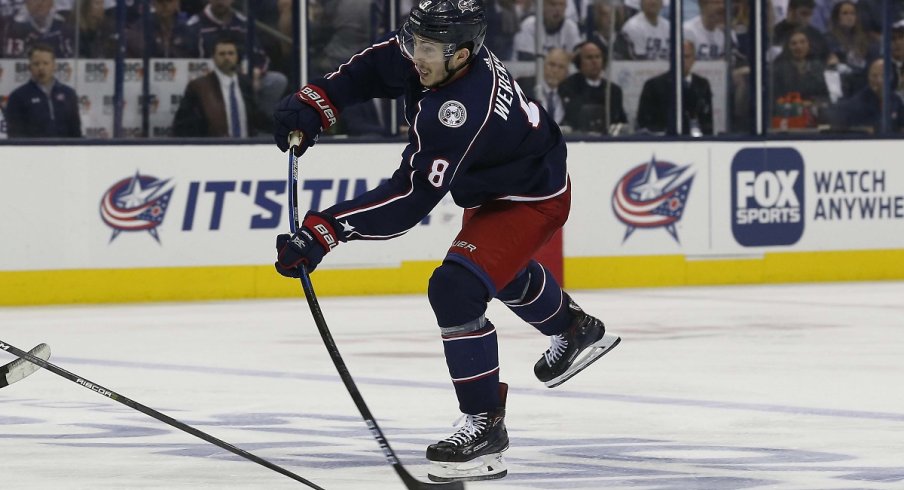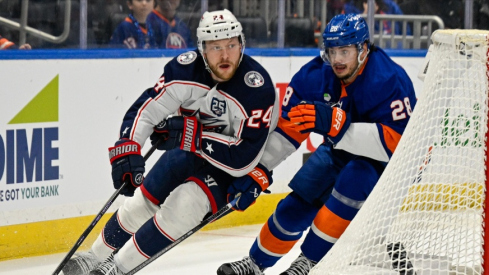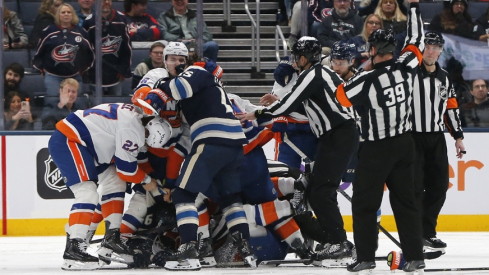As the dust settles on the Blue Jackets season, it's time to start thinking about what this team will look like next year. Even if Artemi Panarin, Sergei Bobrovsky, and Matt Duchene move on, one truth should still hold true: the Blue Jackets should have a stellar defense corps.
In the meantime, some serious housekeeping will need to be attended to by GM Jarmo Kekalainen, who's going to be a busy man this spring and well into the summer. The Blue Jackets have several high-profile free agents, both of the unrestricted (UFA) and restricted (RFA) variety (more on that in a moment).
The Blue Jackets have a number of key RFA's, none more significant than Zach Werenski. As the Blue Jackets look to keep their defense corps intact, he will be a top priority for management to retain. What may that contract look like? Glad you asked.
First, some context. As players advance in their careers, they acquire more rights. When a player is tenured enough to become a UFA, he is free (on July 1) to sign with whichever team he pleases. But an RFA comes with a bit more nuance. The short version is: when a player becomes an RFA, the team that holds his rights can offer him a contract to remain a part of his current team. Contract negotiations can become contentious, as they have in the past with this current regime and Ryan Johansen, as the team has some serious negotiating power over the player. In fact, the only way a different team can procure another team's RFA is by submitting an offer sheet, effectively going behind the current team's back in hopes of stealing that player. But acquiring a player via the offer sheet is accompanied with a steep penalty, so it happens less than you'd think (more on offer sheets here).
Werenski had an up and down 2018-19 season but was much more consistent - at both ends of the rink - as the season progressed. In the playoff run, John Tortorella relied on Werenski to the tune of 26:37 per game, trailing only Seth Jones (28:32).
The durable defenseman is clearly a huge part of the team's future, but at what cost? As it stands now, Jones is the club's highest paid defensemen, inked for three more seasons at an incredibly team-friendly $5.4M average annual value (AAV) cap hit. Werenski has proven to be a top pairing defenseman and at just 21 years of age, he's going to get paid. Should he get more than Jones? Maybe. Will he? That's another question.
In a salary cap world, no two years are the same. As the cap goes up, contracts do, too. That means that when Jones signed his 6-year, $32.4M contract, it was worth 7.4% of the salary cap (though that was nearly three years ago). If the cap goes up to $83M (as it's expected) for 2019-20, that same 7.4% would net Werenski over $6.1M per season. Werenski probably won't get $6M, not only because he's perhaps not worth that (yet), but because of the optics in the dressing room. As strange as that may be to say, Jones is the team's best defenseman, and it would be noteworthy if that wasn't true in the fall.
Still, Werenski will get paid. Over the past 10 years, there have only been five under-21 defensemen in the NHL with over 100 games played and over 0.5 points/game. The company is impressive, to say the least.
| Player | Team | PPG | Start | End |
|---|---|---|---|---|
| ERIK KARLSSON | OTTAWA SENATORS | .69 | 2009 | 2012 |
| DREW DOUGHTY | LOS ANGELES KINGS | .63 | 2009 | 2011 |
| ZACH WERENSKI | COLUMBUS BLUE JACKETS | .54 | 2016 | 2019 |
| CHARLIE McAVOY | BOSTON BRUINS | .51 | 2017 | 2019 |
| TYLER MYERS | BUFFALO SABRES | .50 | 2009 | 2012 |
Like Werenski, McAvoy is also an impending RFA. Whichever player signs first could effectively set the market for the other team/player, but that may be over-simplifying things. Another comparable player from the same draft is Noah Hanifin, who signed for 6 years, $29.7M ($4.95M AAV) last August.
For what it's worth, the Grosse Point, MI, native doesn't seem too concerned with contract talks. At his season-end media day, he had this to say:
"I haven’t thought about it, honestly. Obviously, that’s something we’re going to have to get done this summer. But I’m not worried about it at all. I guess it’s something I’ll have to start thinking about."
The other item that needs consideration is the term. Werenski has been in the league for three years, meaning he's four years from reaching UFA. More and more, top young players are structuring their contracts to end concurrently with their first UFA year, so as to maximize earnings and to allow them to pick their destination ASAP.
Based on his peers, we can expect Werenski to sign somewhere between $5M-$6, in the same neighborhood as Seth Jones. In a perfect world, the Blue Jackets lock him up into his UFA years, for five or six years at a higher AAV, but I'm not holding my breath. Ultimately, the contract should be a win-win for both sides. The player gets his big-ticket and the team gets cost certainty for some of his prime years.
My prediction: 4 Years, $21.6M ($5.4M AAV).


